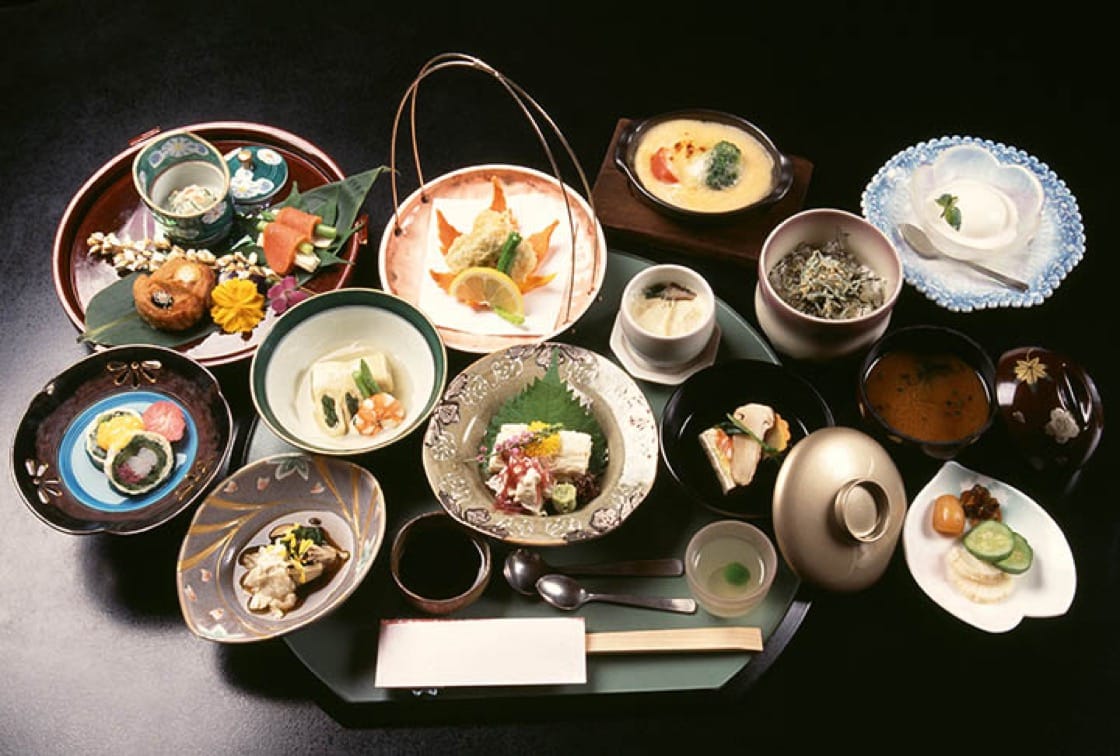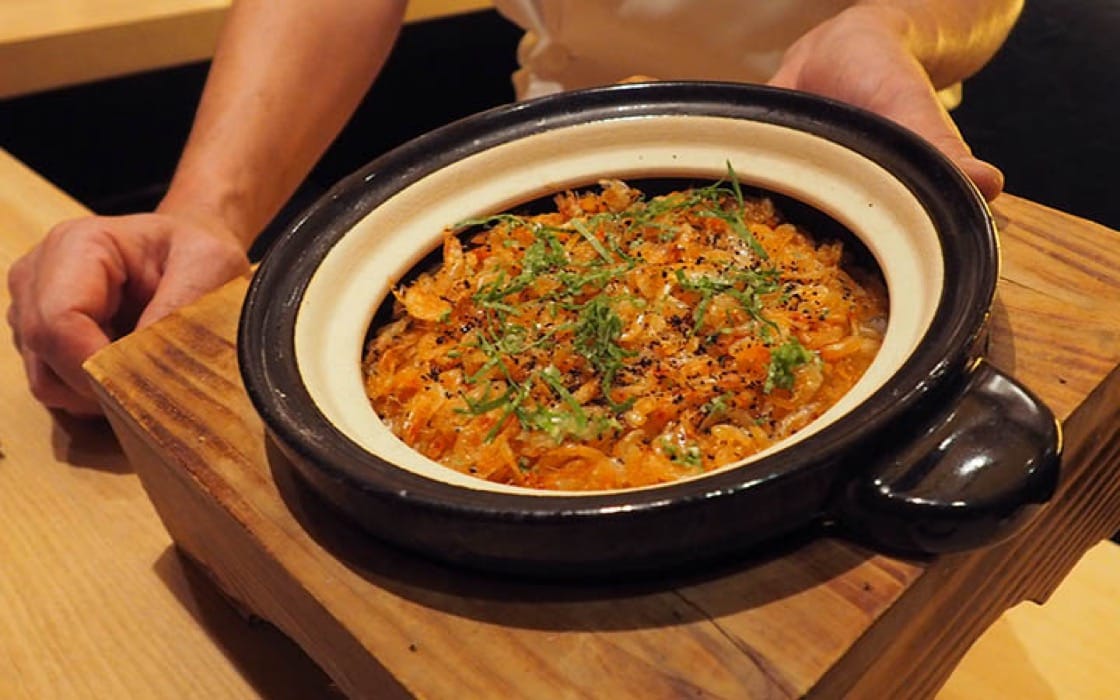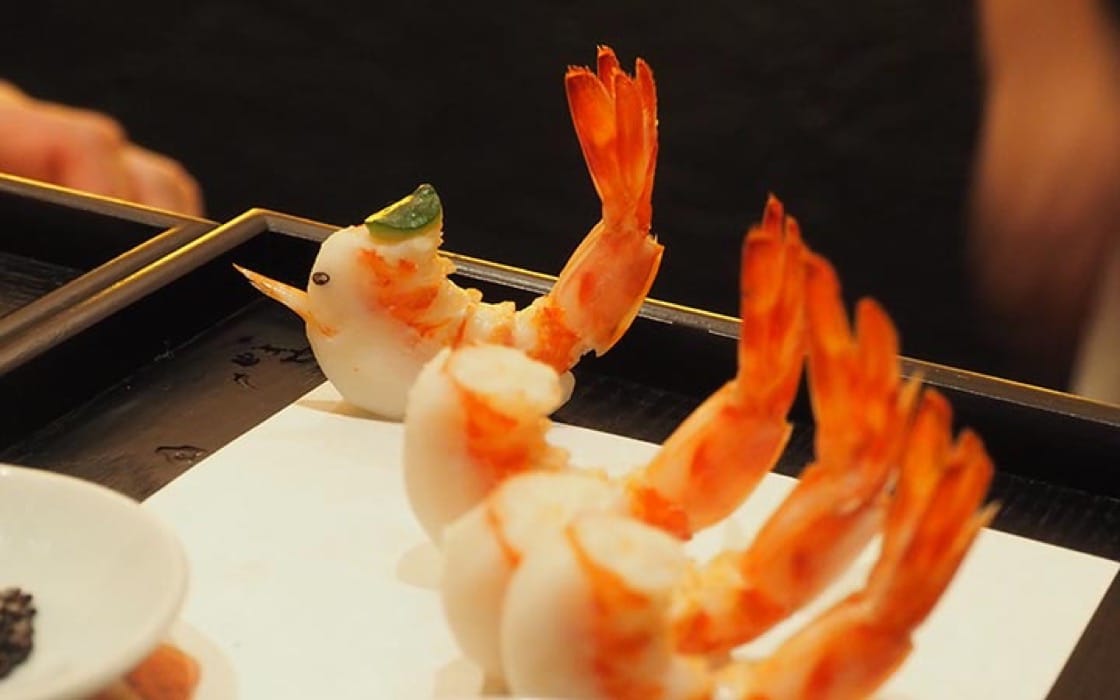
1. Kaiseki or kaiseki?
If you pay close enough attention, you may notice that two different Japanese restaurants may sometimes be similarly labelled as kaiseki restaurants in the English language, but yet have variant versions - 懐石 or 会席 - when it comes to their Japanese kanji names.
The former variant draws from the term chakaiseki (茶懐石), a formal Japanese tea ceremony experience practised from the 16th century, and traditionally refers to a simple multi-dish meal served as a prelude to enjoying a few cups of matcha. Kaiseki literally means “stones in the bosom”, and references the stones (seki, or 石) that monks would fold into their robes (kai, or 懐) and close to their bellies, to keep hunger at bay.
The other, slightly more contemporary, variant of kaiseki is indicated by the characters 会席, and refers to a social gathering (kai, or 会) with seating (seki, or 席). It is a more elaborate meal accompanied with sake and ending with a simple tea service. This form of kaiseki has evolved over the years to become luxurious and elaborate compared to the cuisine's humble roots.

2. The difference between kaiseki and omakase
Though the two terms are often – and erroneously – used interchangeably, they mean completely different things.
Omakase is short for omakase shimasu, which translates to, "I trust you [the chef]." The omakase style of dining can be found at several types of Japanese restaurants such sushi, robatayaki or kushikatsu restaurants. The upcoming courses can be adjusted to suit the diner, depending on his reaction to the food. The customer can also choose to stop the meal once he has had enough.
Kaiseki on the other hand, is a prescribed set of courses that is dependent on the seasonal produce. “Kaiseki cuisine is considered to be Japan’s top fine dining cuisine because of its beauty, intricacy and the amount of thought and effort put in - from conceptualizing to cooking the dish,” says chef Yoshiyuki.

3. Name your method
Traditionally, kaiseki meals comprised nine courses, according to chef Yoshiyuki, but you may find variants with anywhere from six to 15 courses. Each course is defined by a particular cooking method, and typical courses may include:
- Sakizuke: the first course, similar to the French amuse bouche, is usually something pickled to whet the diners’ appetite for the courses to follow
- Hassun: the seasonal course, which marks the seasonality of the meal (see below)
- Suimono: a soup course made with a dashi broth base
- Tsukuri: a sashimi course
- Yakimono: a grilled course
- Takiawase: a simmered dish, typically of vegetables mixed with some meat
- Shokuji: a rice course (gohan), served with miso soup and pickles
- Mizugashi or Mizumono: a platter of Japanese sweets or fruits

4. The Hassun platter sets the tone
Named for the eight-inch wooden platters they are served on, the Hassun course is typically presented as the second course in the kaiseki sequence, and sets the seasonality and tone of the meal. “In traditional chakaiseki, the Hassun would comprise just two elements to represent the mountain and the sea,” explains chef Yoshiyuki.
Today, like many other modern kaiseki chefs, his platter of appetisers may comprise up of four to six items, such as paste-filled broad beans with a flower stem stacked atop to represent the mountains, and a lightly poached Okinawan prawn shaped into a nightingale as a symbol of the sea.
The aesthetics of the plate should draw your eyes from the left side of the platter, which usually has ingredients stacked up to create visible height, to the right side of the platter, to convey the idea of energy flowing from mountain down to the sea. “Looking at the plate should give you a pleasant and calming effect, as though one is looking into a garden,” he says.

5. The most important course in kaiseki dining: Suimono
Don’t be fooled by the deceptively simple Suimono or soup course. According to chef Yoshiyuki, it is revered as the most important course in a kaiseki sequence - and the mark of a chef’s ability.
“Many recipes are derived from trial and error and it may take the chefs many years of experimenting before they perfect their own personal dashi recipe. Even when two people cook the dashi using the same recipe, the taste can differ widely as there are many other aspects that affect the taste, such as timing and precision,” says chef Yoshiyuki.


The suimono is usually made from dashi stock, which is made by carefully boiling kombu (kelp) and katsuobushi (dried, fermented, and smoked skipjack tuna) for hours. There are two main grades of dashi: ichiban dashi is usually drunk as soup, while niban dashi (made from katsuoboshi with traces of blood) is used as the base for marinades and sauces.
Don’t be alarmed if you notice your kaiseki chef spritzing water over the covered soup bowls before placing them in front of you. This is a hand-me-down tradition from the Samurai era, explains chef Yoshiyuki, and done as a means to detect if the bowls have been re-opened and surreptitiously spiked with poison by enemies while travelling from kitchen to dining room.
“Have a burning question for a chef or about a particular type of cuisine? Send it to lifestyle@michelin.sg and we’ll help you find the answer.”



















